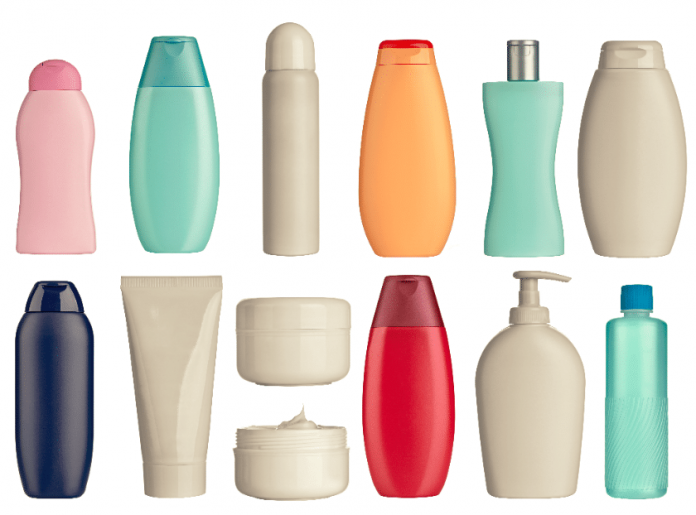
Formaldehyde is a recognized cancer-causing agent (carcinogen) by the National Cancer Institute and is in most of the products you buy and use for personal care. According to data from the federal Food and Drug Administration, nearly one in five cosmetic products contains a substance that generates formaldehyde, a known human carcinogen. Formaldehyde can be found in nail polishes, nail hardeners, eyelash glues, hair gels, soaps, makeup, shampoos, lotions, and deodorants, among other products. If you choose to use these personal care goods at home, take care to use them in a large room with plenty of ventilation and fans or an open window, so as to reduce exposure to formaldehyde. If you are visiting a nail salon make sure that they have good ventilation as well.
So why is formaldehyde in these products if it is so bad? Because it is a perfect preserving agent. It keeps things “fresh” in a very ironic way. Phthalates, similar to formaldehyde, work as softeners in personal care products such as cosmetics and shampoo, as well as flexible plastics like children’s toys. There’s little debate that formaldehyde can pose health risks. Short-term exposure can cause skin irritation from physical contact or irritated eyes, and burning in the nose when inhaled.
The long-term effects found that formaldehyde exposure caused cancer in rats, the Environmental Protection Agency classified the chemical as a “probable carcinogen.” The International Agency for Research on Cancer has classified formaldehyde as a human carcinogen.
Read More About the Dangers Lurking in Personal Care Products
Caution needs to be taken when selecting the wide range of products labeled and marketed as natural. By labeling themselves as “Natural,” “Organic” or “Herbal,” there can still be other chemicals lurking unbeknownst to the unsuspecting consumer of these products.
Here are some sources to make sure your favorite personal care goods are personally good for you:
Whole Foods Market Premium Body Care Standards: Developed by Whole Foods market to evaluate natural products sold in their stores. You may choose to adopt either the Basic or the Premier standard, or some combination thereof.
Mother Earth's The Ban List: 7 Ingredients to Avoid in Personal-Care Products
Another product which heavily contains Formaldehyde is embalming fluid. A likely carcinogenic that should not be making its way into the environment, green embalming fluids can be used. Instead of the traditional formaldehyde based fluids, green embalming fluids are comprised of all natural plant based extracts. Usually made from essential oils that will adequately preserve the body for up to several weeks, green embalming is not only healthier for the Earth, but also for the funeral home employees preparing the body.
The human body decomposes rapidly after death. Care must be taken to keep the body as cool as possible to slow the decomposition that results in noxious odors and the leakage of body fluids from body orifices. Alternatives do exist for keeping a body long enough for a funeral, such as keeping the body in dry ice or refrigerated.
When caring for your own dead at home before burial or cremation, cooling is a must. It is easy to keep a body cool for three days or more that way. That is about the same length of time it takes to get a death certificate, the official document that allows burial. You need to deal with transportation issues from the place of death and to the cemetery, and those vary by state, but home burial can and is being done now. A human body can be kept in a cool room for at least 24 hours before decomposition begins.
Dry Ice can be used instead of refrigeration if necessary. Dry ice is frozen carbon dioxide. A block of dry ice has a surface temperature of -109.3 degrees Fahrenheit (-78.5 degrees C). Dry ice also has the very nice feature of sublimation — as it breaks down, it turns directly into carbon dioxide gas rather than a liquid. The super-cold temperature and the sublimation feature make dry ice great for refrigeration. For example, if you want to send something frozen across the country, you can pack it in dry ice. It will be frozen when it reaches its destination, and there will be no messy liquid left over like you would have with normal ice. Careful! While dry ice looks like it would be cold, it's extremely dangerous to the touch and can cause severe burns.
Read About 8 Things To Consider When Dealing with a Pet’s Death
On average, one needs about 15 pounds of dry ice for each day the body needs to be refrigerated. The dry ice bricks need to be replaced approximately every 12 hours, depending on factors such as the room temperature and size of the body.
To prepare the dry ice, each piece should be about the size of a brick or two, wrapped in cloth (you must use thick leather or cloth gloves when handling dry ice!). Put one piece in the following places: under the upper back, in the small of the back, and one each at either side of the torso, alongside the body. If the deceased is a large person, you may want more dry ice to ensure adequate cooling. Once the body is ready for the vigil, place a favorite bedspread or other cloths over and around it; the cloths will serve to hide the dry ice from view. The effect should be tranquil, peaceful, and beautiful.




